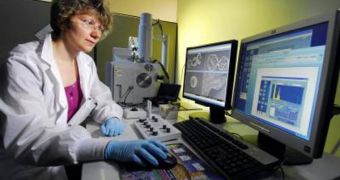By incorporating inorganic nanoparticles on silk templates, researchers at the Georgia Institute of Technology (Georgia Tech) have recently developed a new method of obtaining strong and flexible composite structures, as well as composite films made of silk-silver nanoparticles. The latter product can be used to create things such as flexible mirrors and films that can reflect certain wavelengths of light. Needless to say, the films also have unusual optical and mechanical properties.
The new technique takes advantage of the fact that biomolecules have the ability to reduce metal ions in their composition through chemical reactions, thus producing nanoparticles in regular conditions, with no need for complex and harsh industrial processes. The resulting compounds could potentially find applications in creating anti-microbial films, thin film sensors, self-cleaning coatings, catalytic materials, and flexible photovoltaic cells.
“We are taking advantage of biological molecules that have the ability to bind metallic ions of silver or gold from solution. These molecules can create mono-dispersed metallic nanoparticles of consistent sizes under ambient conditions – at room temperature and in a water-based environment without high vacuum or high temperatures,” Georgia Tech School of Materials Science and Engineering Professor Vladimir Tsukruk explains. The research was presented on August 19th at the 238th annual meeting of the American Chemical Society (ACS), held in Washington DC.
“This system provides very precise control over nanoparticle sizes. We produce well-defined materials without the problem of precipitation, aggregation or formation of large crystals. Since the silk fibroin is mono-dispersed, we can create uniform domains within the template,” postdoctoral researcher Eugenia Kharlampieva, who works in Tsukruk's laboratory, says. The process begins with fibroin extracted from silk cocoons being made soluble, and then placed onto a silicon substrate using a special spin-coating technique.
This results in multiple thin layers, which are then patterned into a template using a nanolithography technique. “Because silk is a protein, we can control the properties of the surface and design different kinds of surfaces. This surface-mediated approach is flexible at producing different shapes. We can apply the method to coat any surface we want, including objects of complex shapes,” Kharlampieva adds.
“Nanomaterials grown under environmentally friendly conditions can be as good as synthetic materials that are produced under harsh conditions. This technique allows us to grow very useful materials under natural conditions,” Tsukruk concludes. The research effort was sponsored by the Air Force Office for Scientific Research and the Air Force Research Laboratory.

 14 DAY TRIAL //
14 DAY TRIAL //